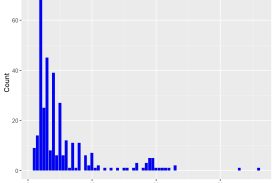Microplastics in the marine environment: research in Tetiaroa
Transitioning from a SAFS research scientist to a graduate student in Fall 2023, Kat Lasdin is familiar with the world of microplastics research. As a member of Jacqueline Padilla-Gamiño’s lab, one of the projects Kat has been involved in focuses on water, sand, and microplastics in Tetiaroa, an atoll in French Polynesia. Tetiaroa is also the site of a breadth of other UW-led work, including seabirds and shark research.

Visiting Tetiaroa in October 2022, Kat took samples of dry sand, wet sand, and water, looking for the prevalence and abundance of plastics in this remote region of the world. Located 30 miles north of Tahiti, the 4.5 miles of the Tetiaroa atoll is enclosed by a reef with nearly no opening. “This makes it a unique place to conduct microplastics research and ask questions such as what type of plastics are found here, where in the atoll are they, and is there a geographical difference in the prevalence of plastics that we find,” Kat shared.
What’s the difference between plastics and microplastics? Microplastics are classed as anything under 5mm in length, and for her research project, Kat is looking at plastics 1mm and greater. Due to the slow degradation of plastics, they have a high likelihood of being ingested by, and accumulating, in various organisms. They’re also a big factor in ocean pollution around the world.

“So far in my analysis, I’m finding that one spot in particular on Tetiaroa, the northwestern area on the lagoon side, has a lot more plastics than anywhere else we’ve seen on the atoll,” Kat said. Digging into the possible reasons behind this, Kat questions whether it could be due to oceanographic differences, or areas of high accumulation. “I’ll be looking into this further in the upcoming months and during the next trip, as well as setting up another project to watch how plastic degrades in the environment over several years,” she added.

Lot of degradation studies have been conducted on plastics around the world, but Kat and the team she works with have a specific focus on the marine environments in tropical areas such as Tetiaroa and Hawaii, where other work in the Padillo-Gamiño lab is conducted. The idea is to bring plastics to these locations, using their base in Washington State as a control, to investigate how the same type of plastic from the same manufacturer degrades in different parts of the world. “We interact with tropical marine environments most frequently in our lab, and every piece of plastic found in the environment is so different. We’re interested in seeing how the same piece of plastic, over the same timeframe, with the same test parameters, degrades in a different way or the same way, depending on the location,” Kat shared.
With another trip planned for the end of 2024, Kat will conduct exposure studies with organisms and plastics as part of her PhD project.
Click below to enlarge the graphs
- The number of 1-mm or greater plastic pieces found per motu that are denser than Milli-Q water. The first density separation occurred in the field with cold saltwater.
- The number of 1-mm or greater plastic pieces found per motu that are less dense than Milli-Q water. The first density separation occurred in the field with cold saltwater.
- The length of each individual piece collected and verified as plastics from the dry sand in Tetiaroa.


